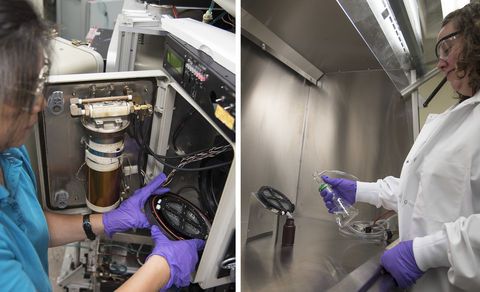If the 1967 film “The Graduate” were remade today, Mr. McGuire’s famous advice to young Benjamin Braddock would probably be updated to “Plastics … with nanoparticles.” These days, the mechanical, electrical and durability properties of polymers—the class of materials that includes plastics—are often enhanced by adding miniature particles (smaller than 100 nanometers or billionths of a meter) made of elements such as silicon or silver. But could those nanoparticles be released into the environment after the polymers are exposed to years of sun and water—and if so, what might be the health and ecological consequences?
In a recently published paper, researchers from the National Institute of Standards and Technology (NIST) describe how they subjected a commercial nanoparticle-infused coating to NIST-developed methods for accelerating the effects of weathering from ultraviolet (UV) radiation and simulated washings of rainwater. Their results indicate that humidity and exposure time are contributing factors for nanoparticle release, findings that may be useful in designing future studies to determine potential impacts.
In their recent experiment, the researchers exposed multiple samples of a commercially available polyurethane coating containing silicon dioxide nanoparticles to intense UV radiation for 100 days inside the NIST SPHERE (Simulated Photodegradation via High-Energy Radiant Exposure), a hollow, 2-meter (7-foot) diameter black aluminum chamber lined with highly UV reflective material that bears a casual resemblance to the Death Star in the film “Star Wars.” For this study, one day in the SPHERE was equivalent to 10 to 15 days outdoors. All samples were weathered at a constant temperature of 50 degrees Celsius (122 degrees Fahrenheit) with one group done in extremely dry conditions (approximately 0 percent humidity) and the other in humid conditions (75 percent humidity).
